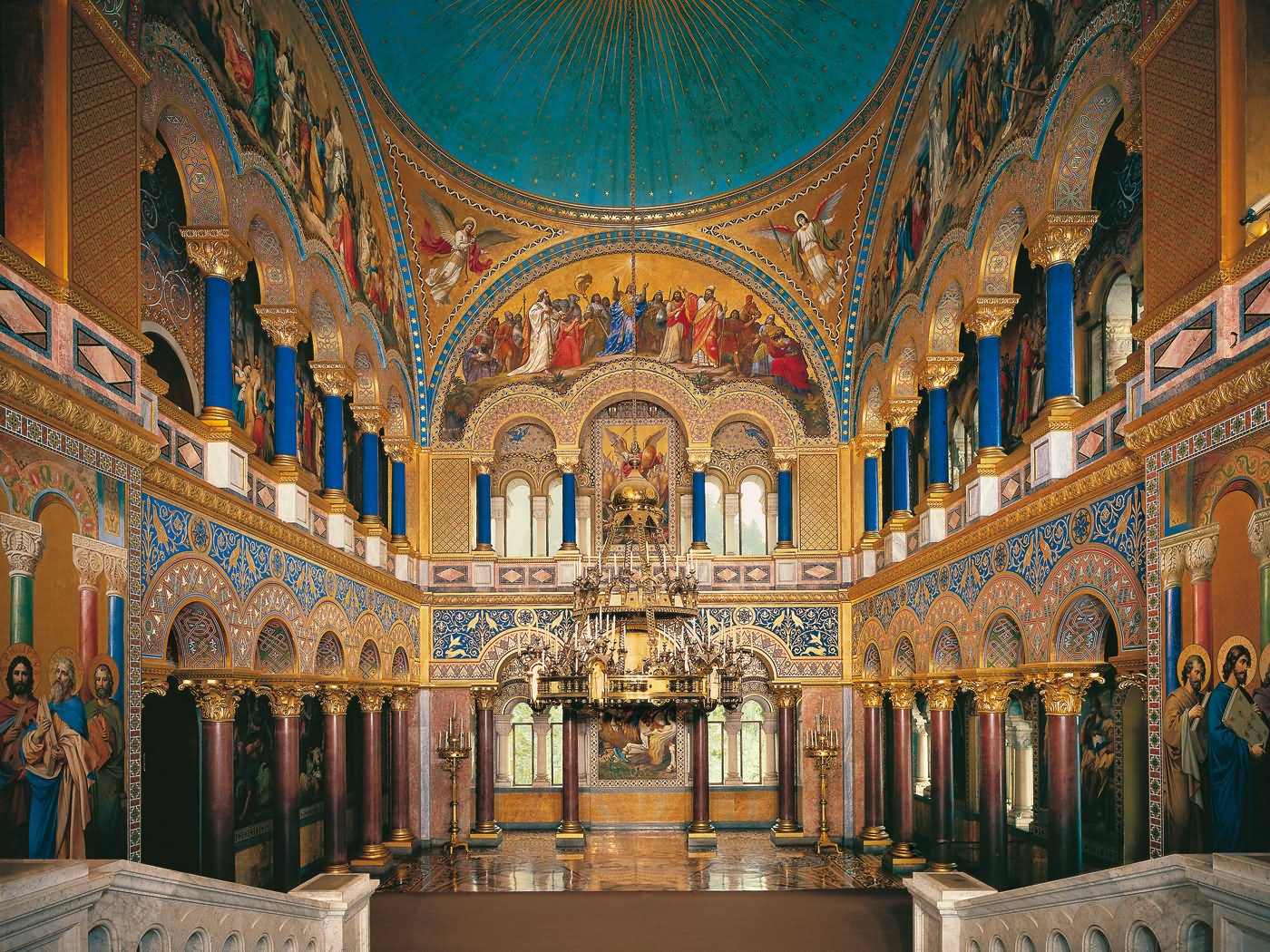Does this castle look familiar? You might have seen it in Chitty Chitty Bang Bang or The Great Escape, but more likely it's because of the Disney connection - that's right, you're looking at the real-life Sleeping Beauty's Castle, or at least the inspiration for it. Schloss Neuschwanstein is one of southern Germany's most famous sights and arguably the world's most famous castle. It was built under the direction of the Mad King, Ludwig II, who ordered construction started in 1869. Ludwig was the man who did not want to be king, or at least one who did not want to rule. His escape from reality and retreat into romanticism and German mythology has left the world this gem, plus a few others (including Herrenchiemsee, which we had visited the previous day). Like that latter residence, Neuschwanstein was never completed, due to the vast sums of money Ludwig was spending on his creations. It was these coffer-depleting construction splurges that eventually led to the king's removal from power in June 1886 on the dubious grounds of insanity - he was certainly eccentric, but most contemporary experts question the finding of those who had him removed from power (he was never directly examined by the group of psychiatrists who concluded he was mentally incompetent). Two days after his deposition, Ludwig II drowned under very mysterious circumstances on the shore of Lake Starnberg.
Neuschwanstein is located in Füssen, at the southern end of Germany's famed Romantic Road. My Lonely Planet guidebook advised during the summer peak season showing up as early as 8 in the morning at the ticket center there in order to snap up the timed tickets needed for the required guided tours of the castle. However, to do so on our own would've meant catching a train from Munich's Hauptbahnhof as early as 4:48am! As we no longer had use of a rental car, we signed up for an organized tour from Munich (New Munich), and so departed from the central station at a more reasonable time of 8:45, arriving in Füssen shortly before noon and then boarding a bus for Schwangau, staging ground for treks up to the castle. My wife prepped herself for the 45-minute walk uphill:
The castle loomed above as the group set out:
We passed by Schloss Hohenschwangau, the castle where Ludwig spent his childhood, and a castle that might've been interesting to visit had we more time to spend:
My daughter pauses by the Alpsee before the uphill trek begins in earnest:
Getting closer to Schloss Neuschwanstein:
A look down into the valley before entering the castle:
And at this point my photographs come to an end (or at least a pause) for, just as at Herrenchiemsee, photography inside Neuschwanstein is verboten. The following images are gleaned from the Internet.
Ludwig was obsessed with Richard Wagner (both the man and his operas), and he wished to recreate Wagner's world of German mythology inside the castle. The Sängersaal (Minstrels' Hall) is decorated with wall frescoes depicting scenes from Wagner's Tannhäuser:
The bedroom continues the Wagner theme, with scenes from Tristan and Isolde. The Gothic-style bed is topped with cathedral-like spires:
There's an artificial cave, with more references to Tannhäuser:
And then there's the stunning, Byzantine Thronsaal (Throne Room):
The tours are short, only 35 minutes in length, but what you see in that period is so overwhelming in its depiction of a fairy tale come to life that I, at least, felt that the cost, effort and time to get to Neuschwanstein had been worth it. After the tour, visitors are free to take out their cameras and phones as they make their way out of the castle, and the result is some impressive vistas:
The classic view of Schloss Neuschwanstein is from Marienbrücke (Mary's Bridge), spanning the Pöllat Gorge over a waterfall just above the castle (and which can sort of be made out in the picture I took below). The bridge has been closed for renovations since last November, but that wouldn't prove to be a problem:
We exited Neuschwanstein and started to make our way downhill...:
...but not more I made a short detour. Our tour guide made the group aware of a narrow trail leading back uphill that bypasses the closed-off road to the Marienbrücke and leads to the edge of a cliff, where I was greeted with this view (note the Hohenschwangau in the background):
Trying to be photographed with the castle in the background wasn't too successful:
The same picture with yours truly cropped out:
One of the members of our tour group was a Buddhist monk. Following behind him as we walked through the forest, I could've been back in Japan or Taiwan:
With some time to kill before catching the bus back to Füssen for the train ride to Munich, we took a break by the lake:
One last look back up at the castle:
Our tour guide Jovanny summarizing the tragic tale of Ludwig II's life as we wait for the train to Munich:
On the trip back to Munich's Hauptbahnhof. The Bavarian countryside - small towns and farms, people walking and cycling on narrow paths running through the fields. I would've liked to spent more time in it:
I'm not a fan of tours in general, but the one the three of us took to Schloss Neuschwanstein was relatively laid-back, especially compared with prior experiences in Taiwan. Our guide was entertainingy informative, we were given enough time to ourselves and there were no hard sells or enforced stops in shops pushing tourist tat.
As for Schloss Neuschwanstein, see it if you can. Poor Ludwig outdid even Walt Disney with this one. The sad irony, of course, is that while the king was removed (and possibly murdered) under dubious grounds and for depleting the royal family's treasury (though not that of the state), the castles that he left behind are extremely profitable today, thanks to tourism.

























No comments:
Post a Comment